The Gothic Modern exhibition to rewrite the history of modern art
Medieval and Renaissance art provided 20th-century artists with emotional material and ways to deal with fundamental human feelings and the dark side of the psyche, as well as birth, death, suffering and sexuality. The exhibition Gothic Modern – From Darkness to Light highlights a phenomenon that has not been addressed in art history before, examining how it is manifested in the works of renowned artists. The Ateneum launched its significant international cooperation project around the topic in 2018, and the museum also serves as the first venue for the exhibition, from 4 October 2024 to 26 January 2025.
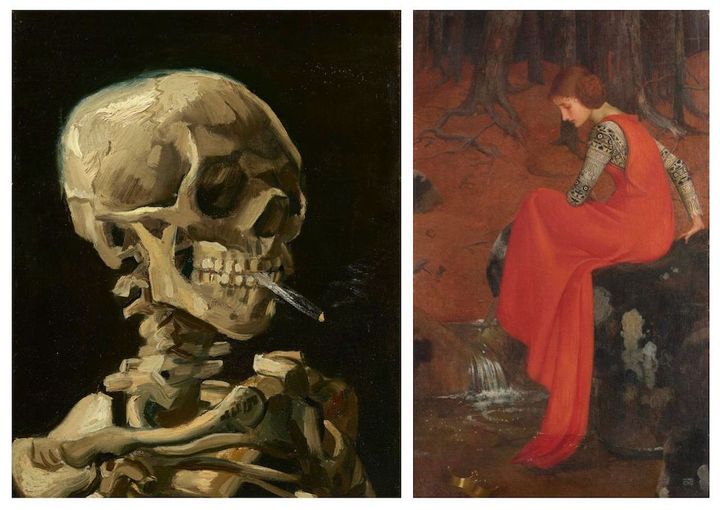
Gothic Modern rewrites the history of modern art. The international exhibition will focus on 19th and 20th-century modern art, the creators of which were influenced by European medieval and Northern Renaissance art. Modern art has previously seldom been examined from the perspective of its relationship with the past, and the extent of this phenomenon has not been researched before. The Ateneum launched a significant international cooperation project on the topic in 2018, and the museum also serves as the first venue to host a related exhibition.
Medieval and Renaissance art provided 20th-century artists with emotional material and ways to deal with fundamental human feelings, as well as birth, death, suffering and sexuality. Artists were interested in the dark side of the human psyche, strangeness, and depicting uncanny frightening things. In the post-World War I period, artists also strove to portray how humans are part of their environment or nature. Depictions of community and trauma became a staple subject in modern art.
The artists featured in the exhibition include Arnold Böcklin, Lucas Cranach the Elder, Akseli Gallen-Kallela, Vincent van Gogh, Theodor Kittelsen, Käthe Kollwitz, Edvard Munch, Hugo Simberg, Helene Schjerfbeck, Marianne Stokes, and Gustave Van de Woestyne.
Preparations for the international project began before the Covid pandemic and the war in Ukraine. With its universal human themes, the Gothic Modern exhibition is now more relevant than ever. The works included in the exhibition deal with the big questions of life, even in a brutal manner and with dark humour. At the same time, the exhibition is strongly linked to many topical phenomena in popular culture in our time.
Famous artists, such as Edvard Munch and Käthe Kollwitz, as examples of the phenomenon
The exhibition will present famous artists and works as examples of the newly researched phenomenon. For example, in the exhibition, Hugo Simberg’s The Garden of Death (1896) will be related to the phenomenon and perspective that new research on art history has brought to light. Helene Schjerfbeck renewed her work through medieval art. Key works will also be seen from Edvard Munch, including one of the artist’s most famous paintings, The Sun. At the same time, the exhibition will highlight unsung artists such as Fritz Boehle and Marianne Stokes.
Other key works in the Gothic Modern exhibition are the prints by the German artist Käthe Kollwitz (1867–1945). These emotional and political works deal, for example, with the trauma of war, the loss of a child, and grief. Kollwitz is a big name globally in art at the moment, and a solo exhibition of her work is on display at the Museum of Modern Art in New York until 30 July 2024. Kollwitz’s art, with its timeless formal idiom and its themes, resonates in our own time, in which there is a need to process grief and trauma through art.
A look to the past reformed modern art
Medieval and Renaissance art, and artists such as Hans Holbein the Younger, Lucas Cranach the Elder and Matthias Grünewald, became relevant in the early 20th century in the post-World War I period. The artists found a connection and an interest in the art and architecture of German-speaking countries and in their formal idiom. Berlin became a hub of contemporary art, and medieval cities, such as Bruges and Lübeck, became places of interest to artists. German-speaking countries became interested in Nordic art, and common interests were discovered.
A look to the past reformed art. Influences were adopted freely and in different ways. Artists also moved away from their canvases and started creating glass art, furniture and tapestries. In addition to paintings and prints, the Gothic Modern exhibition displays objects, sculptures and furniture, including a rarely seen sheet music cabinet from the late 1890s, carved by Akseli and Mary Gallen-Kallela together. Artists also became interested in the restoration of churches, and the art of the period was characterised by non-commercialism and introversion.
The Ateneum as the initiator of an international project and the first exhibition venue
The curator for the Ateneum exhibition is museum director Anna-Maria von Bonsdorff. The exhibition is based on a long research project, which, for the first time, explored how artists of the modern era became interested in medieval art. The project has been led by Professor Juliet Simpson (Coventry University), who is a guest curator for the exhibition, working together with von Bonsdorff. After its debut at Ateneum, the exhibition will travel to the National Museum, Norway and the ALBERTINA Museum, Vienna, where it will be curated by Vibeke Waallann Hansen and Cynthia Osiecki (Curators, National Museum, Norway) and Ralph Gleis (Director, Alte Nationalgalerie), respectively.
The exhibition to be complemented by a comprehensive exhibition catalogue
The exhibition will coincide with the publication of a comprehensive exhibition catalogue in English and Norwegian, which will be distributed by Hirmer Publishers, the University of Chicago Press (USA and Canada) and Thames & Hudson (the rest of the world). A more concise Finnish-language exhibition catalogue will also be published. The exhibition catalogues will include articles written by Anna-Maria von Bonsdorff, Ralph Gleis, Vibeke Waallann Hansen, Kjartan Hauglid, Timo Huusko, Stephan Kuhn, Marja Lahelma, Jeanne Nuechterlein, Riitta Ojanperä, Cynthia Osiecki and Juliet Simpson. The editors-in-chief of the publication in English and Norwegian are Anna-Maria von Bonsdorff and Juliet Simpson. The publication in English will be edited by Katja Ikäläinen. The publication in Finnish will be edited by Hanne Selkokari.
You can buy advance tickets on the Ateneum website
If you want to guarantee your admission to the Ateneum at a specific time, we recommend buying an advance ticket. Tickets can also be booked with a Museum Card and various annual passes, with no additional fees. Tickets are also sold at the door.
Read more about buying tickets
Ateneum Art Museum
Opening hours: Tue–Fri 10:00–20:00 | Sat, Sun 10:00–17:00 | Mon closed
Admission fees: Standand admission at the ticket office €22 | Standard admission online €20 | Discounted admission €12 | 18–24-year-olds €12 | Under 18-year-olds €0 | Museum Card: free entry
Keywords
Contacts
Reetta HaarajokiCommunications Officer
Tel:+358 50 4766 290reetta.haarajoki@ateneum.fiAnna KariCommunications Manager
Tel:+358 40 717 8185anna.kari@ateneum.fiImages
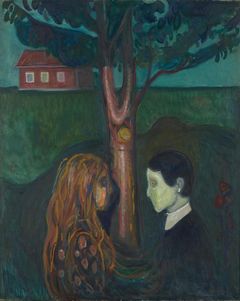
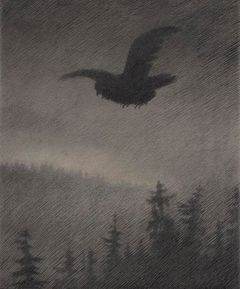
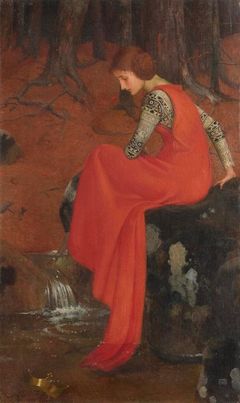
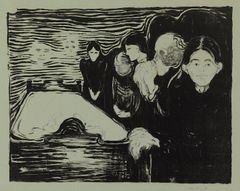
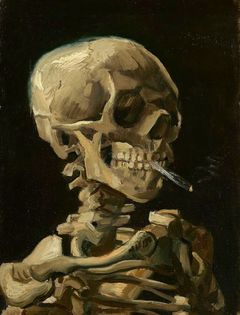
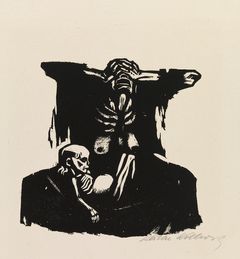
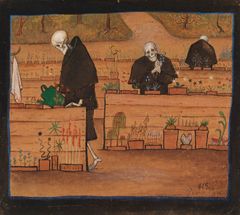
Links
The Finnish National Gallery is the national museum of fine arts. It operates three of Finland’s best-known museums: the Ateneum Art Museum, the Museum of Contemporary Art Kiasma and the Sinebrychoff Art Museum. It also manages the national art collection and its archives, develops Finnish cultural heritage and promotes art to the wider public.
Alternative languages
Subscribe to releases from Ateneumin taidemuseo / Konstmuseet Ateneum / Ateneum Art Museum
Subscribe to all the latest releases from Ateneumin taidemuseo / Konstmuseet Ateneum / Ateneum Art Museum by registering your e-mail address below. You can unsubscribe at any time.
Latest releases from Ateneumin taidemuseo / Konstmuseet Ateneum / Ateneum Art Museum
Helene Schjerfbeck-utställning visas på The Metropolitan Museum of Art i New York2.4.2025 07:40:00 EEST | Pressmeddelande
En utställning med verk av en av Finlands mest kända konstnärer, Helene Schjerfbeck, kommer att visas på det prestigefyllda museet The Metropolitan Museum of Art (The Met) i New York 5.12.2025–5.4.2026. Det är första gången en finsk konstnär får en utställning på The Met, som är ett av de mest betydande museerna i världen. Utställningen är resultat av Ateneums långsiktiga arbete och en del av projektet Klassikerna ut i världen som för ut den finska konsten i världen med stöd av Jane och Aatos Erkkos stiftelse.
Helene Schjerfbeck -näyttely The Metropolitan Museum of Artiin New Yorkiin2.4.2025 07:40:00 EEST | Tiedote
Suomen tunnetuimpiin taiteilijoihin kuuluvan Helene Schjerfbeckin teosten näyttely nähdään arvostetussa New Yorkin The Metropolitan Museum of Artissa (The Met) 5.12.2025–5.4.2026. Tämä on ensimmäinen kerta, kun suomalainen taiteilija saa näyttelyn The Metiin, joka on yksi maailman merkittävimmistä taidemuseoista. Näyttely on Ateneumin pitkäjänteisen työn tulos ja osa Klassikot maailmalle -hanketta, joka vie taidetta ulkomaille Jane ja Aatos Erkon säätiön tuella.
Helene Schjerfbeck exhibition to be shown at The Metropolitan Museum of Art in New York2.4.2025 07:40:00 EEST | Press release
An exhibition of works by one of Finland’s most famous artists, Helene Schjerfbeck, will be presented at the prestigious Metropolitan Museum of Art (The Met) in New York from 5 December 2025 to 5 April 2026. This is the first time that a Finnish artist has landed an exhibition at The Met, one of the most significant art museums in the world. The exhibition is the result of long-term work by the Ateneum and part of the Klassikot maailmalle (“Taking Finnish classics abroad”) project, which takes Finnish visual art abroad with the support of the Jane and Aatos Erkko Foundation.
Välkommen till presskonferensen för utställningen Gränsöverskridare onsdagen den 5 mars 2025 kl. 10.15.18.2.2025 10:00:00 EET | Pressmeddelande
Presskonferensen för utställningen hålls onsdagen den 5 mars 2025 kl. 10.15 både på Ateneum och på nätet – noggrannare information nedan. Gränsöverskridare samlar för första gången 1800-talets resande kvinnliga konstnärers arbeten 7.3–24.8.2025. Då konstnärerna på Gränsöverskridare var verksamma hade kvinnor ännu inte rösträtt. Kvinnor tvingades ofta välja mellan karriär och familj: i och med äktenskap blev de ofta tvungna att sluta med sitt arbete som konstnär. Många av de modiga konstnärerna på utställningen har varit förebilder för kvinnliga konstnärer som levde senare, såsom Helene Schjerfbeck och Ellen Thesleff. Ett konsthistoriskt betydande utställning lyfter fram tidigare helt okända konstnärer och deras nätverk, och presenterar verk som aldrig tidigare setts i Finland. Utställningen är en fortsättning på Ateneums arbete som en pionjär inom forskningen kring kvinnliga konstnärer.
Tervetuloa Rajojen rikkojat -näyttelyn tiedotustilaisuuteen keskiviikkona 5.3.202518.2.2025 10:00:00 EET | Tiedote
Näyttelyn tiedotustilaisuus on ke 5.3.2025 sekä Ateneumissa että verkossa klo 10.15 – lisätiedot alempana. Rajojen rikkojat tuo ensimmäistä kertaa yhteen 1800-luvun matkustavien naistaiteilijoiden työtä 7.3.–24.8.2025. Heidän aikanaan naiset joutuivat valitsemaan uran ja perheen välillä, eikä heillä ollut vielä äänioikeutta. Rajojen rikkojat raivasivat tietä seuraavien sukupolvien taiteilijoille. Monet näyttelyn rohkeista taiteilijoista olivat myöhemmin eläneiden naistaiteilijoiden, kuten Helene Schjerfbeckin ja Ellen Thesleffin esikuvia. Taidehistoriallisesti merkittävä näyttely nostaa esiin aikaisemmin täysin tuntemattomia taiteilijoita ja heidän verkostojaan, sekä esittelee Suomessa ennen näkemättömiä teoksia. Näyttely jatkaa Ateneumin työtä naistaiteilijoihin liittyvän tutkimuksen edelläkävijänä.
In our pressroom you can read all our latest releases, find our press contacts, images, documents and other relevant information about us.
Visit our pressroom